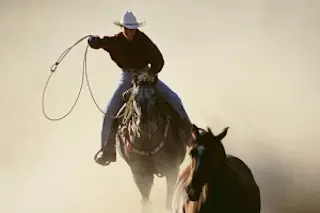Image: Flickr/meridicanThere's a special kind of awesome that happens when scientists use their powers to dissect fun things, be it a game, or, in this case, a rope trick. Here, physicists used mathematical modeling to attempt to understand how cowboys manage to do those dazzling tricks with their lassos. It turns out that even a "flat loop", the simplest of rope tricks, is difficult to understand. But, after pages of math, and with the help of a "robo-cowboy," they were able to develop a physical model that explains the flat loop. Even better, high speed video of a professional backed up their model. Yee-haw!An introduction to the mechanics of the lasso. "Trick roping evolved from humble origins as a cattle-catching tool into a sport that delights audiences all over the world with its complex patterns or 'tricks'. Its fundamental tool is the lasso, formed by passing one end of a ...
Scientists use a "robo-cowboy" to explain the physics behind lassos.
Explore the mechanics of the lasso in this study, revealing the physics behind the flat loop rope trick. Yee-haw!
More on Discover
Stay Curious
SubscribeTo The Magazine
Save up to 40% off the cover price when you subscribe to Discover magazine.
Subscribe













